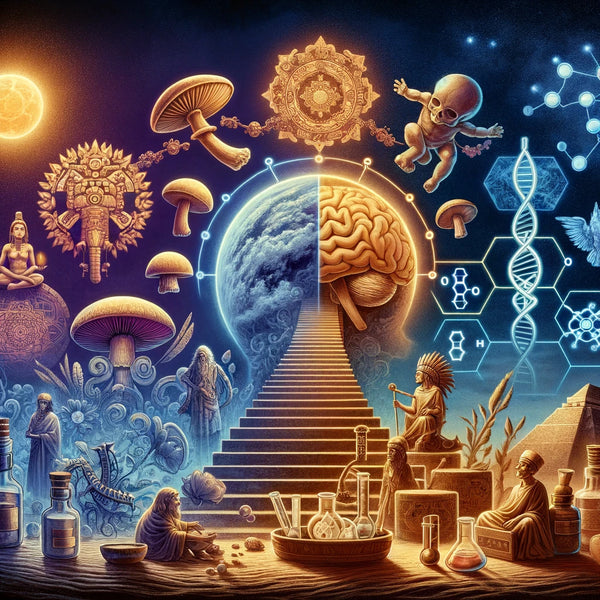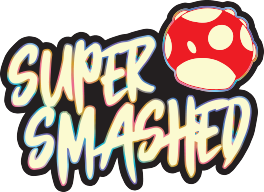
The Sacred Journey: Historical and Cultural Use of Entheogenic Mushroom
Throughout human history, various cultures have sought pathways to deeper understanding, healing, and connection with the spiritual world. Among the myriad of tools employed in these quests, psilocybin mushrooms stand out for their profound psychoactive effects, which have been harnessed in religious ceremonies, spiritual practices, and traditional medicine. This journey into the historical and cultural use of psilocybin mushrooms reveals the depth of humanity's relationship with these natural compounds and their significant impact across different civilizations and time periods.
Ancient Beginnings
The use of psilocybin mushrooms dates back thousands of years, with archaeological evidence suggesting their significance in human societies as early as 9000 BCE. In the Sahara desert, for instance, rock paintings depict figures holding mushroom-like objects, hinting at the use of hallucinogenic substances in prehistoric times. However, it is in the ancient civilizations of Mesoamerica where we find the clearest evidence of psilocybin mushrooms being revered as sacred tools for communication with the divine.
Mesoamerican Rituals and Ceremonies
The Aztecs, Mayans, and Mazatecs of Mesoamerica held psilocybin mushrooms in high esteem, referring to them as "teonanácatl," which translates to "flesh of the gods." These cultures believed that the consumption of psilocybin allowed them to commune with deities, gain spiritual insight, and seek guidance for their communities. Mushrooms were consumed during religious ceremonies, healing rituals, and divinatory practices, often under the guidance of shamans or priests who facilitated the journey into the spiritual realm.
In these ceremonies, participants experienced visions, a sense of oneness with the universe, and profound revelations about the nature of reality, which were interpreted as messages from the gods. The use of psilocybin mushrooms was deeply integrated into the spiritual and social fabric of these civilizations, embodying their quest for knowledge and connection to the divine.
European Encounter and Suppression
The arrival of Spanish conquistadors in the 16th century marked a turning point in the history of psilocybin mushrooms. The Catholic missionaries accompanying the conquerors viewed the indigenous use of hallucinogenic mushrooms as heretical and a challenge to Christian doctrines. Efforts to eradicate the use of psilocybin and other psychoactive substances included the destruction of texts, persecution of practitioners, and the suppression of indigenous religions and customs.
Despite these efforts, the use of psilocybin mushrooms persisted in secret among certain indigenous communities, particularly in remote regions of Mexico. The knowledge and traditions associated with their use were passed down through generations, preserving a link to the ancient practices of their ancestors.
Rediscovery and Western Interest
The western world largely remained oblivious to the psychoactive properties of psilocybin mushrooms until the mid-20th century. The watershed moment came in 1955 when Gordon Wasson, a vice president of J.P. Morgan & Co., and his wife Valentina, a pediatrician with an interest in ethnomycology, participated in a mushroom ceremony led by María Sabina, a Mazatec shaman in Oaxaca, Mexico. Wasson's account of his experiences, published in Life magazine in 1957, introduced the western public to the spiritual and mystical effects of psilocybin mushrooms, sparking scientific interest and the beginning of psychedelic research.
The Psychedelic Renaissance and Contemporary Use
Today, we are witnessing a resurgence of interest in the therapeutic and spiritual potential of psilocybin, often referred to as the "psychedelic renaissance." Modern research is exploring the use of psilocybin to treat a range of mental health issues, including depression, anxiety, and PTSD, with promising results. Meanwhile, the spiritual use of psilocybin, inspired by ancient traditions, continues to grow, with individuals seeking personal growth, healing, and a deeper connection to the transcendent.
The contemporary use of psilocybin mushrooms, whether for therapeutic or spiritual purposes, echoes the ancient quest for understanding and connection that has guided humanity for millennia. As we learn more about the potential of these substances, it's crucial to remember and respect the rich cultural heritage from which this knowledge comes. The historical and cultural use of psilocybin mushrooms offers a window into the human psyche and our timeless pursuit of meaning, healing, and a deeper connection with the world around us.
Conclusion
The journey of psilocybin mushrooms from the sacred rituals of ancient civilizations to the forefront of contemporary research on mental health and spirituality highlights the enduring human fascination with these natural compounds. As we continue to explore their potential, it's essential to approach psilocybin with respect, curiosity, and an appreciation for the rich historical and cultural tapestry that has shaped our understanding of these "flesh of the gods" substances. In doing so, we honor the legacy of those who have gone before us in the sacred journey towards enlightenment, healing
